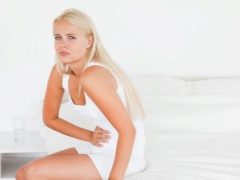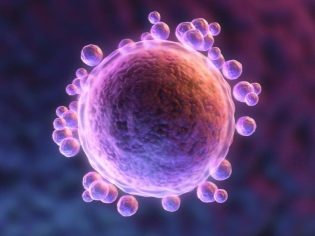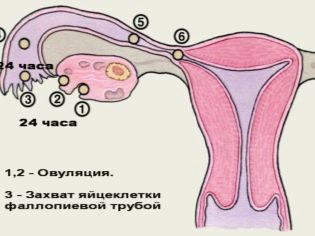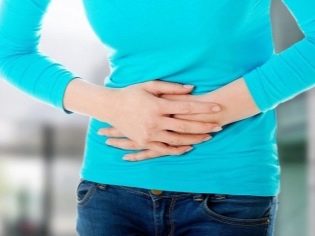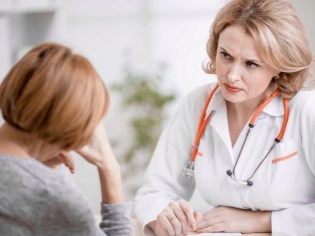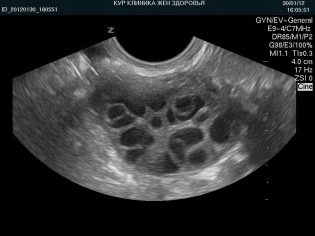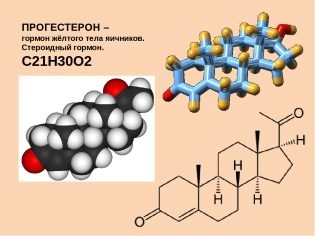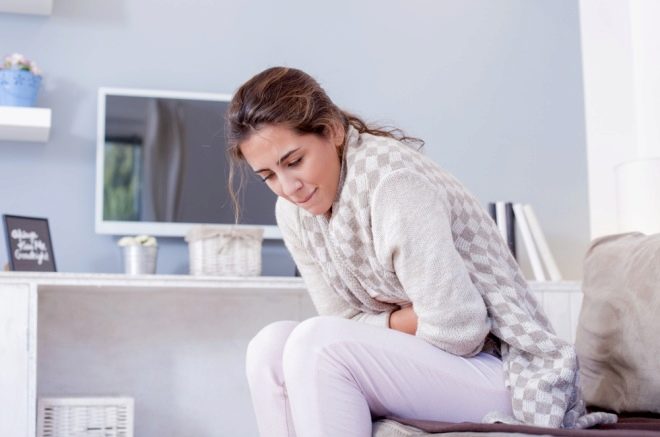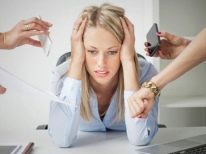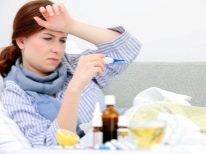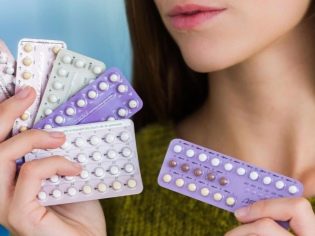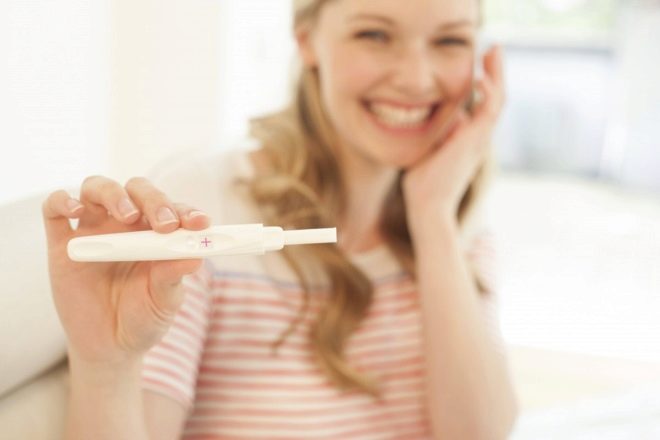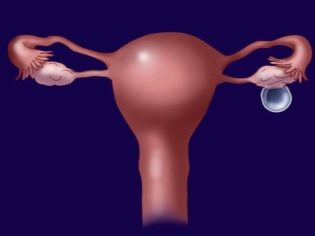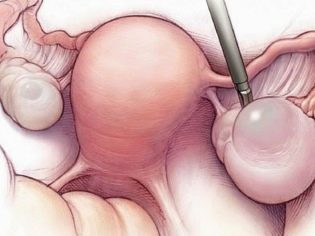Why can pull the lower abdomen after ovulation?
A healthy non-pregnant woman should not experience any pain in the abdomen after ovulation. The second phase of the menstrual cycle is normally painless, and therefore the appearance of nagging pain in the lower abdomen after the middle of the cycle is a reason for going to the gynecologist, there may be several reasons for this phenomenon.
What's happening?
Ovulation - the period of release of a mature egg from the follicle. In the female sex glands, there are many first-order oocytes, and only one (rarely two) succeeds in ripening within one menstrual cycle. Ovulation makes it possible to conceive a baby, because a woman is fertile only during this period. The egg cell lives for a day, after which it dies if the conception has not occurred: it falls through the fallopian tube into the uterus, and two weeks after ovulation, another menstruation begins, and the cycle begins anew.
Women at different ages have a certain normal number of anovulatory cycles when ovulation does not occur at all.
If at the age of 20 a girl has such cycles per year is 1-2, then already at 35, the number of “empty” menstrual cycles can reach 5 or 6 per year - that is why with age it becomes more difficult to conceive a child, the fertile abilities of the fair sex decrease.
During a normal menstrual cycle, a woman's well-being can change during ovulation - vaginal discharge becomes more abundant, sexual desire increases, nipples can become more sensitive, some women say they feel ovulation, the follicle ruptures by a little pain from the right or left side of the lower abdomen, in the area of the ovaries. The medicine does not know the objective symptoms of ovulation, but it is possible to determine this point - by laboratory blood tests for hormones, by ultrasound, and by home ovulation tests.
Normally, the second half of the menstrual cycle takes place under the action of progesterone on the body. No pain should be. The amount of discharge after the release of the egg begins to decrease, the so-called dry period begins, at which, under the action of progesterone, the cervical mucus is thick and scanty.
If in the second half of the cycle the lower abdomen hurts, it pulls the stomach after ovulation, you need to consult a doctor and understand the causes of this phenomenon. They may be different.
Possible reasons
Observation of the woman herself will help in establishing the causes of the appearance of pulling pain in the lower abdomen after the end of ovulation. It is very important to determine the time interval after the expected day of ovulation, the first unpleasant sensations appeared. Depending on this, it can be assumed (there is a right to assert only at the doctor!) Certain reasons.
Ovulatory Syndrome
By this concept in medicine is meant a certain symptomatic complex, which is characteristic of women with a high individual level of sensitivity. They usually begin to feel pains of varying intensity even during the period of the follicle rupture.In the second phase of the cycle, after ovulation, the concentration of progesterone in the female body increases, the walls of the vessels become looser, and the likelihood of injury increases. Basal temperature is maintained at high values.
Many argue that they feel bloating, bloating, and such sensations are associated with the action of progesterone, which, among other things, also retains fluid in the tissues. If a woman has a large follicle matured (in medicine it is called tense), then microtrauma due to its rupture occurs on the surface of the gonadal gland, which could also theoretically be due to pain. In this case, the discomfort appears on the day of ovulation, lasts just over an hour and with less intensity lasts up to 3-4 days after ovulation.
The oviducts, the right and left fallopian tubes, contract as the egg moves inside the tube, regardless of whether the pregnancy has occurred or not. Usually, the musculature of the tube where the oocyte is located is more actively reduced. But sometimes both oviducts are reduced at the same time, and then it can be perceived by the woman as nagging pains, resembling pain during menstruation. Such pains usually appear 1–2 days after ovulation and last about a week.
The cervix, slightly ajar during ovulation, closes, closes after the ovulation process is completed. Sometimes there is an increased accumulation of fluid in it, which can also be felt as a pulling pain in the neck, some describe it as “pulling the uterus”.
Minor nagging pains may be associated with the most common constipation.In some women, progesterone develops after ovulation in the second phase of the menstrual cycle.
According to the WHO, ovulatory syndrome is peculiar in one way or another to every fifth woman on the planet. But ladies usually pay attention to it only when the discomfort is quite pronounced. In only 5% of cases, such women have intense pains, they complain that they are pulling and sore strongly, like during an attack of appendicitis, for example.
If there are already several cycles in a row with such symptoms, you should visit the doctor after the next menstruation, who will give recommendations, prescribe painkillers and anti-inflammatory drugs, as well as antispasmodic drugs.
Late ovulation
Ovulation is a variable value, and it does not obey any calendar laws. Despite the fact that it usually occurs in the middle of the cycle, it is quite possible to shift the timing of the follicle to one side or the other. If the stomach got sick in a few days after ovulation, then it is possible that its timing has shifted, and the oocyte leaves the bursting follicle right now.
A woman’s well-being, hormones, stress, travel, flights, change of climatic and time zones, as well as catarrhal and other diseases that are associated with fever can affect the timing.
Late ovulation is a phenomenon that most often occurs in women with established gynecological diseases, infections, as well as in healthy women during the first year after delivery. Late ovulation occurs in women who have an abortion, but within 3–4 months after abortion. Then the menstrual cycle becomes stable.
Sometimes late ovulation is an individual trait associated with slow pituitary work and pituitary disorders. You need to visit an endocrinologist and make tests for a hormonal profile.
Premenstrual syndrome
One week after ovulation, pain and aggravation in the lower abdomen may appear due to the early onset of premenstrual syndrome.PMS for each of the fair sex flows with its own characteristics, some people have no signs of approaching menstruation, some only appear 3 or 4 days before menstrual bleeding, but there is also a rather large group of women who begin to feel signs of premenstrual syndrome in about 6– 7 days before the onset of menstruation.
Usually nagging pains are not the only sign. Most women say that their stomach becomes swollen, nausea can be tormented, the mood under the action of progesterone begins to change, the emotional state becomes very unstable and unpredictable. Chest sensitivity is increased, constipation may be present or, conversely, the stool becomes frequent and fluid. Many at the same time suffer from headaches and aching in the lower back. These are the symptoms of conception called the early signs of pregnancy, and many women are confident that they became pregnant until the day of the onset of menstruation.
All of these symptoms are closely related to the effects of progesterone on the female body. And there is no difference whether a pregnancy has occurred in the current cycle or not - progesterone is still produced. The reasons that some women feel PMS and others do not, doctors advise to look for heredity - this feature is usually inherited.
The most common PMS starts in women with a deficiency of vitamin B, calcium and magnesium, overweight, in women under severe stress who lead an insufficiently active and mobile lifestyle.. PMS is a frequent companion of the second phase of the cycle for women who cannot imagine their life without coffee.
If these symptoms repeat from cycle to cycle, you should visit a gynecologist., make the necessary analyzes, change the food system, saturating your diet with whole grain cereals, dairy products, vegetables and fruits. A visit to the swimming pool, gym will also be beneficial, it is important to monitor your weight. From chocolate, strong tea and coffee should be abandoned.
Pain relieve anti-nonsteroidal anti-inflammatory drugs.. If the pain is severe and regular, hormonal contraceptives may be recommended - when suppressing ovulation, the symptoms of PMS usually subside.
New pregnancy
If usually the second part of the cycle is not accompanied by any unpleasant sensations, and in the current they have appeared, this may well speak about the onset of pregnancy. Of course, this statement is only a guess, because even the most sensitive test cannot recognize an “interesting” position on such a short time. In this case, the stomach after ovulation for 2-3 days pulls due to contraction of the smooth muscles of the oviduct, and a week after ovulation, the pulling pains can mean the implantation of the embryo into the endometrial layer of the uterus.
It pulls the lower back and abdomen, often in combination with a characteristic sign — implantation bleeding — with an unobtrusive bloody spotting, which usually passes in 1–2 days without a trace. The mammary glands can be bruised, nipples - sensitive. Persisting in the abdomen can last for a long time, during the entire first trimester. So you should wait and do a pregnancy test on the first day of the delay. or take a blood test for hCG about 10–11 days after ovulation.
If the pain is much worried, sick, and there is reason to believe that pregnancy could have occurred, avoid taking painkillers. It is better to complain to the doctor, do not forget to warn the specialist that you may be pregnant.
Follicle cyst
Development of a follicular cyst usually occurs as a result of incomplete ovulation — the follicle has matured but not burst — either after ovulation, if a cavity filled with fluid contents is formed on the gonad. If the cyst forms quite large, then it can ache, pull. Often such cysts appear in women after 30 years, they do not always hurt, and often go unnoticed.
If the fluid cavity is physiological in nature, it usually resolves independently. In the second half of the cycle, under the action of progesterone, even functional cysts increase in size. Sharp pain may appear on day 10 or 11 after ovulation, when fluid from the cavity begins to irritate the surface of the reproductive gland.
In some cases, there is a threatening state of cyst rupture, and this may additionally be accompanied by an increase in body temperature. Therefore, when the right or left side of the abdomen hurts, shortly before the menstruation, it is necessary to consult a doctor, make an ultrasound. Some cysts require surgical treatment.
Other reasons
The presence of systematic pain after ovulation in the second half of the menstrual cycle may indicate the presence of more serious health problems than a follicular cyst or PMS - the presence of neoplasms of benign or malignant nature. When myoma and other neoplasms under the action of progesterone metabolic processes occur, which cause the appearance of nagging pain.
The reason may lie in the infection, for example, in gonorrhea or chlamydia. If you do not receive treatment, the defeat of the gonads will be only a matter of time, often secondary infertility develops. Infectious lesions can be suspected by the accompanying symptoms: unpleasant discharge with odor, itching in the crotch area.
Recommendations
Leave nagging pain after the completion of ovulation can not be ignored. A woman is recommended to start keeping a diary of her menstrual cycle, where she will enter basal temperature indicators, mark the days of the appearance of painful pulling sensations.. This will help both her and her doctor quickly to clarify the question of why the pain started 5 or 8 days after ovulation.
It is very important to monitor the nature of the discharge. and also note data about this in the diary. If thrush started together with the pain, atypical discharge from the genitals appeared, it is important to always consult a doctor without self-healing.
The diary also needs to mark the days when sexual intercourse was held. It is possible that the appearance of unpleasant pulling sensations on the next day after ovulation or on any other day of the menstrual cycle may be associated with microtraumas of the vagina and cervix. In this situation, you also need to visit a doctor.
Examination by a gynecologist will help determine whether there is inflammation and neoplasms, endocrine disorders. In the overwhelming majority of cases, it is possible to select a treatment regimen that quickly gives positive results.
Read more about ovulatory syndrome specialist in the video below.
